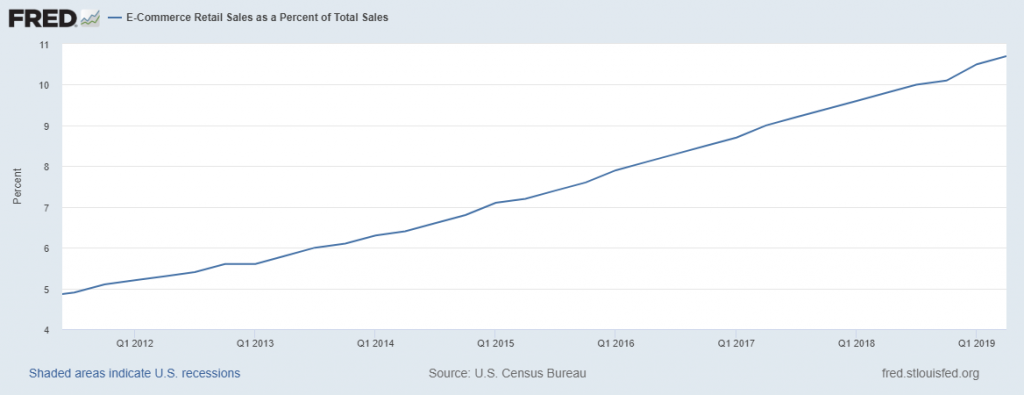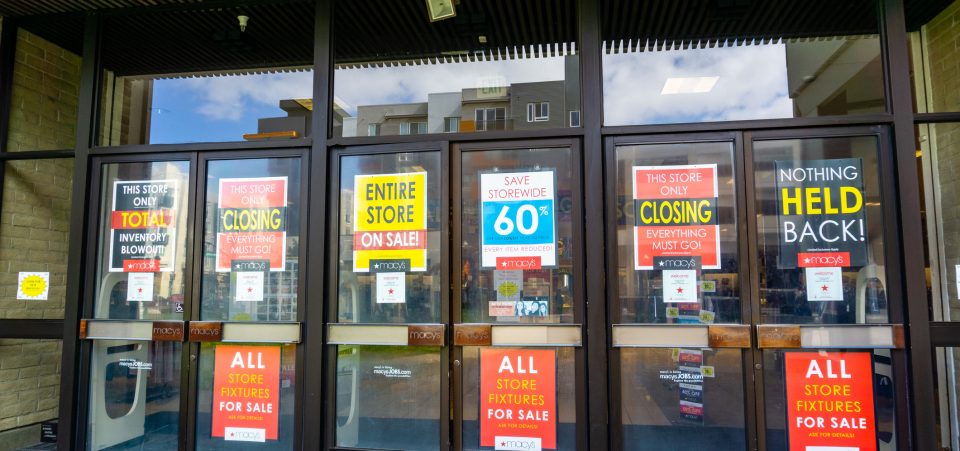Retailers Say U.S. Economy Could Be Taking Turn for the Worse
The U.S. economy grows if American consumers are doing well. But if consumers are struggling to spend, an economic slowdown usually follows. It’s that simple.
Right now, it looks like American consumers have stopped going out to shop and there’s a retail apocalypse in the U.S. economy. We are seeing rampant store closures. Malls are dying.
Just recently, there was news that Forever 21, Inc., a clothing retail chain, filed for Chapter 11 bankruptcy.
Linda Chang, Executive Vice President of Forever 21, said, “This was an important and necessary step to secure the future of our Company, which will enable us to reorganize our business and reposition Forever 21.” (Source: “Forever 21, Inc. To Implement Global Restructuring to Focus on Profitable Footprint,” Business Wire, September 29, 2019.)
Mind you, Forever 21 is just one recent example of a U.S. retail company filing for bankruptcy. Over the past few years, retailers have been going out of business all over the country. It’s very evident; if you have been to a mall recently, you may have noticed the difference too.
According to Coresight Research, a company focused on researching the retail and technology sectors, U.S. retailers have announced 8,567 store closures so far in 2019. In the entire year of 2018, store closures in the U.S. only amounted to 5,844. (Source: “Weekly US and UK Store Openings and Closures Tracker 2019, Week 38: Casey’s to Open More Stores,” Coresight Research, September 20, 2019.)
That means store closures in the U.S. are running almost 47% higher in 2019 than in the entire last year.
Online vs. In-Store Shopping
There’s a lot of misconception that retail stores are closing down because Americans are choosing to buy online. Mark my words: this could be a very misleading argument. Beware if you subscribe to this thinking.
See the chart below, which plots online sales as a percentage of overall retail sales in the U.S. economy.

(Source: “E-Commerce Retail Sales as a Percent of Total Sales,” Federal Reserve Bank of St. Louis, last accessed October 1, 2019.)
Surely, over the past few years, online sales have increased, but they are still just a small portion of the overall retail sales in the U.S. economy, 10.7% in the second quarter of 2019.
What Do Store Closures Really Say?
Dear reader, you really have to wonder what is happening with the U.S. retail sector.
I really feel that consumers in the U.S. economy are struggling and aren’t going out to spend like they used to. And that’s exactly why we have a retail apocalypse at hand.
This is bad news.
I continue to follow the store closure data closely, and here are three things to keep in mind:
- The U.S. gross domestic product (GDP) is highly dependent on consumer spending. Retail store closures suggest that consumer spending is falling and that the U.S. economic growth rate could fall.
- Store closures also mean job losses. This could turn into a big problem if more closures follow.
- If you own consumer discretionary stocks, be careful. If consumers are becoming pessimistic, it could be bad for investors who own these stocks.






